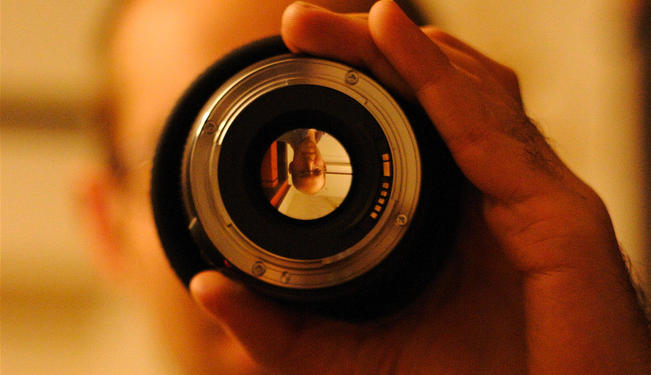“Sic transit Gloria mundi” (“Thus passes the glory of the world”)
February 10th, 2012. 8 hours, 3 minutes and 5 seconds. In this precise yoctosecond, roughly 7,000,000,000 people “exist” simultaneously. I have no real conception of what that might be. It is just a number, a symbol; I cannot grasp its meaning directly. Let us peel the onion back a bit to the place where I am and the people who actually stand in front of me.
The subway runs its course, literally delivering these people to their destinies. There is an awkward, yet familiar silence only challenged by the carriages rattling and the phlegmatic station announcement. Everyone tries hopelessly not to look to each other. The bittersweet tone of life sighs everywhere, though; it is the éminence grise we all seem to recognize. I don’t know these people, but they are here, at least their bodies are, existing and being side by side with me at this precise moment. They are this enigmatic “thing” we call the Other. Here, right now, they are extras, figurants of my life. Each one a river, a story, an event, an infinitely sculpted, carved plot, detailed to the fractal. La comédie humaine, as Balzac would call it, full of different characters, manners, religions, traditions and tragedies. Although I know nothing about the course of their lives, there is indeed a binding character. We all have a particular perspective, a unique vision of life. I too am a mere fleeting episode in the background of the painting someone else is drawing on this subway. Together we form an archipelago of perspectives through which the worldview is constituted. Similar to an Escher Drawing, they are isolated and yet inseparable.
But what is the Leitmotiv which is at the root of these perspectives? If we peel the onion a bit more, life appears as an internal connection of “lived experiences”. The centre of these lived experiences, and therefore, the pole of the internal connection itself, is an “I”, an ego to whom all sense of the experiences is referred. Every single lived experience derives its identity from this stream of consciousness. It discloses itself as a perspective, as a frame of access to the external medium of lived experiences, i.e. the world. The world, the “space” where we literally “find” ourselves is filled with meanings and functionalities which are pre-determined. These, in turn construct a context to lived experiences. Hence, we have a dialectic between subject and world, between an “I” that constitutes the premises through which the world is given and the world as the “space” where this subject discovers itself as such. In short, a subject to whom a world is given and is always the result of his own interpretation. This underlying “interpretation” is precisely the leitmotiv of all perspective, it is the guiding principle which attaches each perspective to a meaning and makes it an act of seizing reality.
Layer after layer, and we see that what is conditioning this interpretation is, among other factors, circumstance. Whether you were born American or Albanian you are already determined by a context. You are already enrolled in engagements with the world which you do not control. Family, place, gender; these elements all place you in a determined environment. Certainly, this state of affairs does not define who you are as a person or as a human being from a spiritual standpoint. Nevertheless, your lived experiences have a horizon of meaning at their start — you already have a perspective. The factual is already positing you, framing you within a certain angle which will determine the lens through which you experience the world and find yourself in the world. In fact, even if you try to free yourself from this framework, this is merely negating a former standpoint within the same framework.
This does not mean, however, that we should posit the foundations of perspective from an absolute deterministic viewpoint. Rather there is no such thing as pure indeterminacy regarding the formation of perspective. If that would be the case, we would have nothing to act or decide upon. The circumstance, the everlasting “start” in which we always find ourselves demands an answer, prompts perspective.
This is a rather philosophical approach to the theme, but it helps to understand how the notion of perspective is decisive to the undertow of “making sense”. Through this concept of perspective we have an exclusive access to a world filled with so many different dimensional levels, dégradés of existence only communicable through art. And even with this being the case, it is always a matter of interpretation. Mike Mills’ film “Beginners” or the very Kubrick-esque Terrence Mallick’s “The Tree of Life” are wonderful recent portraits of how perspective is defined by these means.
There are several aspects of life that take the leading role in one’s perspective, giving therefore a detailed, clear view of their meaning, which, on the other hand, can be totally obscure to another person. I sweep the whole subway carriage and I know all of us here could say to one another “you don’t know what it is like”. The oxymoron is precisely this: to have a perspective means that something is left out, i.e. something is not attended to at the expense of that which is the main theme of each personal narrative.
However, none of these particular perspectives overlap each other, as if one would be qualitatively better than the other. They are simply different, each holding its own key to the world. Here lies the true wonder of sharing perspectives and personal experiences as the utterance of the possibility of multiple enlargements and replacements of perspective — the magnifying glass or the microscope which make the acknowledgement of an infinite number of “understanding modes” or “perceiving modes” possible. As Ortega y Gasset puts it, the “inveterate error would be to consider that reality, regardless of the standpoint one has of it, is something with a physiognomy of its own”.
It is true that no one can put himself in someone else’s shoes completely. Notwithstanding, by postulating and exploring different perspectives through others, we can see ourselves from a different angle, that is, our own shoes.
For more than 10 years, Fair Observer has been free, fair and independent. No billionaire owns us, no advertisers control us. We are a reader-supported nonprofit. Unlike many other publications, we keep our content free for readers regardless of where they live or whether they can afford to pay. We have no paywalls and no ads.
In the post-truth era of fake news, echo chambers and filter bubbles, we publish a plurality of perspectives from around the world. Anyone can publish with us, but everyone goes through a rigorous editorial process. So, you get fact-checked, well-reasoned content instead of noise.
We publish 2,500+ voices from 90+ countries. We also conduct education and training programs on subjects ranging from digital media and journalism to writing and critical thinking. This doesn’t come cheap. Servers, editors, trainers and web developers cost money.
Please consider supporting us on a regular basis as a recurring donor or a sustaining member.
Support Fair Observer
We rely on your support for our independence, diversity and quality.
Will you support FO’s journalism?
We rely on your support for our independence, diversity and quality.









